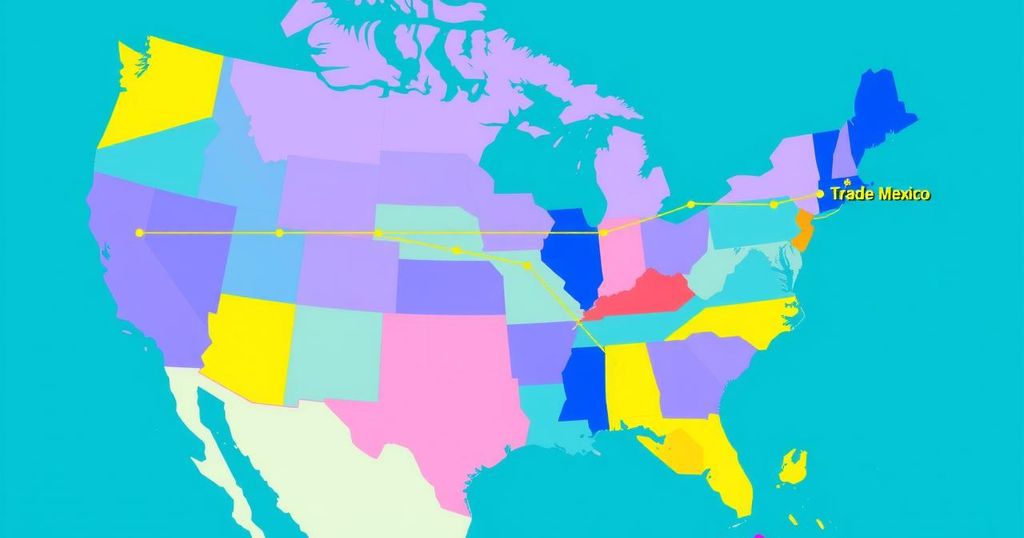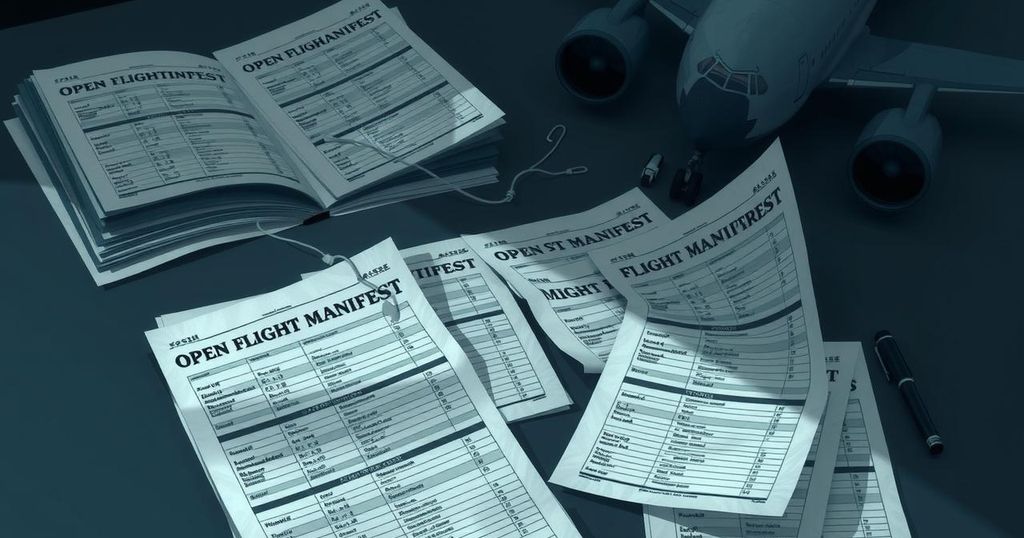World news
AFP, ASIA, BELARUS, BLOOMBERG, CANADA, CLAUDIA SHEINBAUM, CUBA, DONALD TRUMP, EUROPE, EUROPE/ASIA, HURRICANE BERYL, INDIA, LEGAL ISSUES, MARK CARNEY, MEXICO, NATIONAL SECURITY, NORTH AMERICA, NORTH KOREA, PHILIPPINES, POLITICS, RUSSIA, TREASON, TRUMP, U.S. ELECTIONS, UNITED STATES, US, WHITE HOUSE
Stella Nguyen
0 Comments
Canada and Mexico Escape Trump’s Reciprocal Tariffs Amid Existing Challenges
On April 2, Donald Trump announced reciprocal tariffs, exempting Canada and Mexico from new charges while maintaining existing tariffs on their goods. The USMCA continues to offer protection against these tariffs, although both countries must navigate existing levies. Canadian and Mexican leaders are preparing counter-strategies against potential trade challenges from Trump’s policies.
On April 2, when President Donald Trump announced reciprocal tariffs, Canada and Mexico were notably exempt from this new wave of tariffs, which began at a 10 percent charge and escalated to 45 percent for various countries. The exemption brought relief to both nations, as they were not included amid Trump’s claims that the U.S. had been “looted, pillaged, raped, plundered” by foreign entities.
Despite their exemption from the April 2 tariffs, Canada and Mexico continue to face existing tariffs on imports. Currently, there are 25 percent tariffs on certain goods, particularly fentanyl-related imports, as well as a 10 percent tariff on Canadian energy and potash. These existing tariffs create an ongoing burden while preserving their exemption under the new framework.
Imports from Canada and Mexico will remain unaffected under the US-Mexico-Canada Agreement (USMCA), ensuring they can bypass the latest tariffs if their goods comply. Nevertheless, if these countries negotiate new agreements regarding the levies, they may still encounter the baseline rate imposed by Trump.
Canadian Prime Minister Mark Carney has stated, “We are going to fight these tariffs with counter-measures. We are going to protect our workers,” which indicates a proactive stance regarding trade disputes. Meanwhile, Mexican President Claudia Sheinbaum is anticipated to provide an official response to the tariffs in her upcoming press conference.
In addition, notable countries like Russia were excluded from Trump’s new tariff list due to existing sanctions that render any considerable trade infeasible. This indicates a strategic filtering of nations affected by the tariffs, maintaining a focus primarily on those not already facing significant international restrictions.
Overall, the issuance of new reciprocal tariffs reflects a significant recalibration of U.S. trade policy under President Trump, with a diverse set of rates tailored specifically for various nations: 26 percent for India, 20 percent for the EU, and up to 45 percent for Vietnam, among others. The ongoing trade landscape is indicative of Trump’s promise during the 2024 campaign to impose even steeper tariffs, particularly on China, signaling potential future challenges in international trade relations.
In summary, Canada and Mexico have successfully evaded Donald Trump’s latest reciprocal tariffs due to their existing tariff obligations and the protections afforded by the USMCA. However, they remain subject to various pre-established tariffs. Both nations seem poised to respond strategically to protect their workers, suggesting ongoing trade negotiations may occur. Trump’s overall trade policy remains aggressive with varying rates on multiple countries, emphasizing the continuously evolving landscape of international trade.
Original Source: www.hindustantimes.com




Post Comment